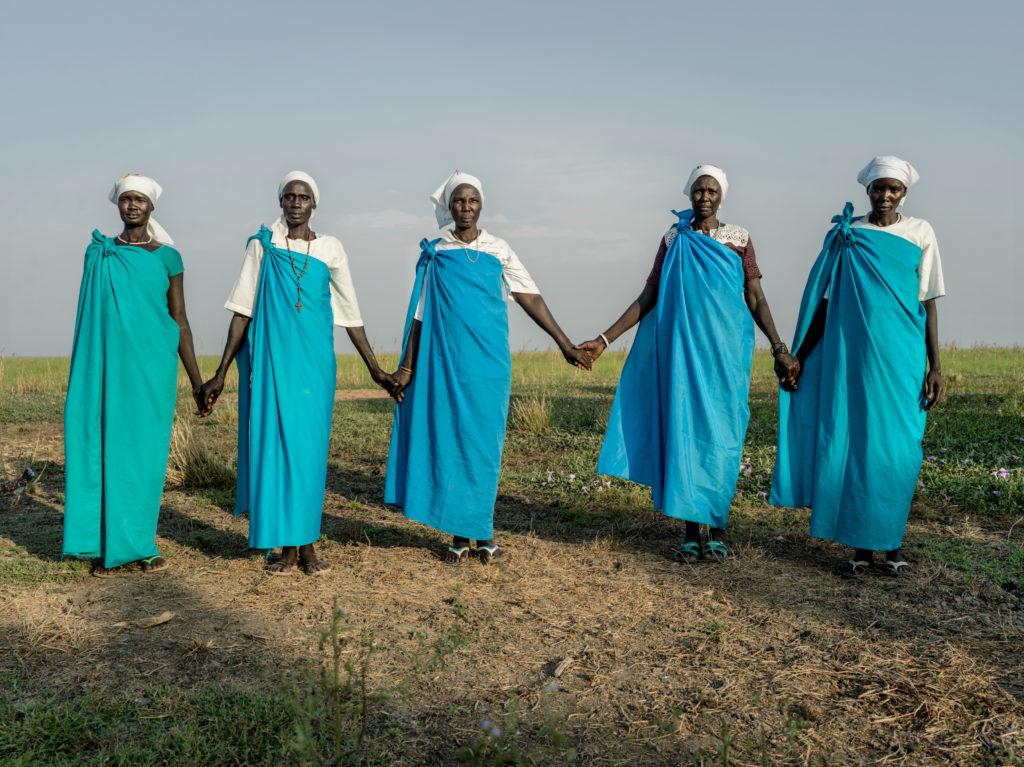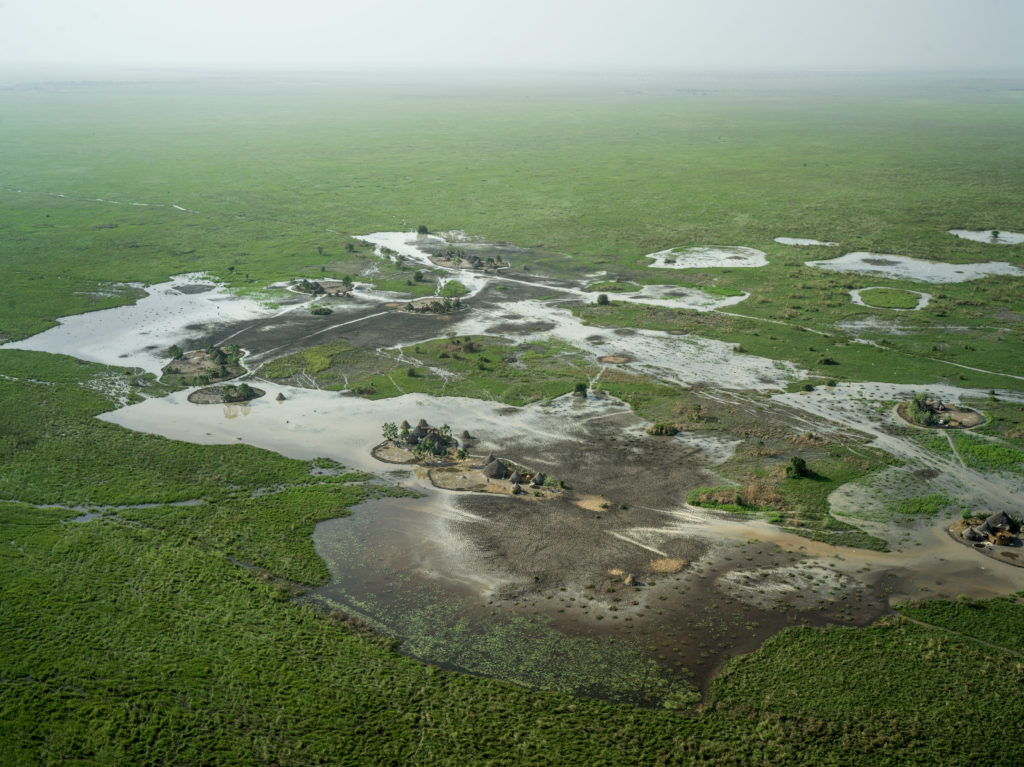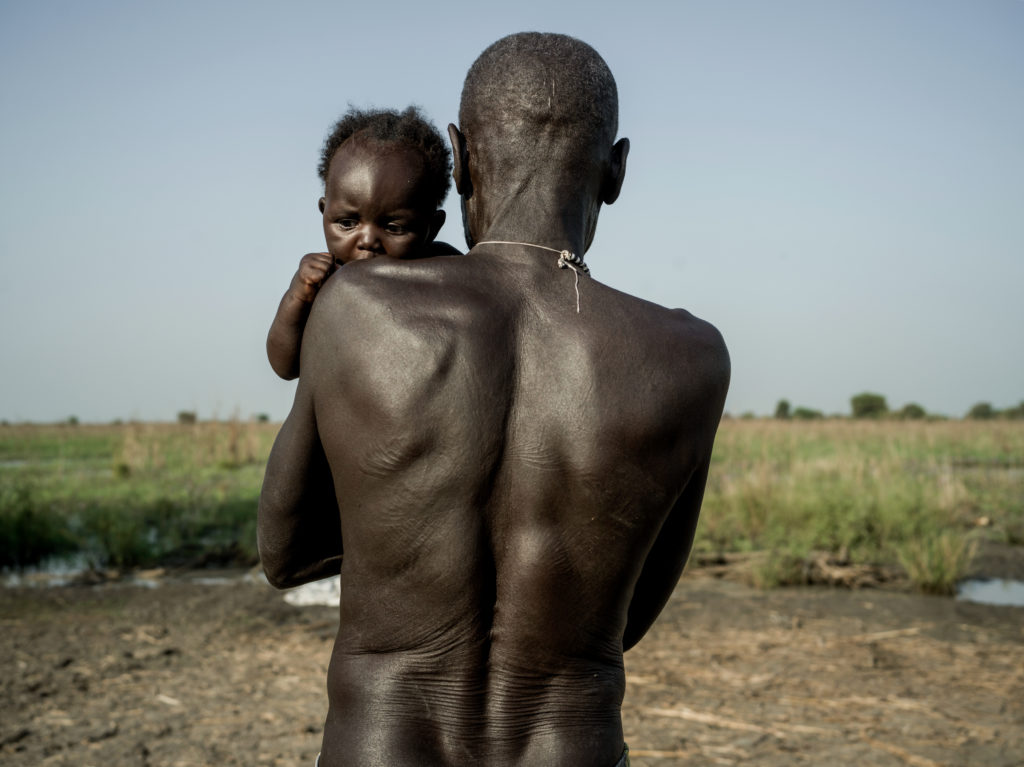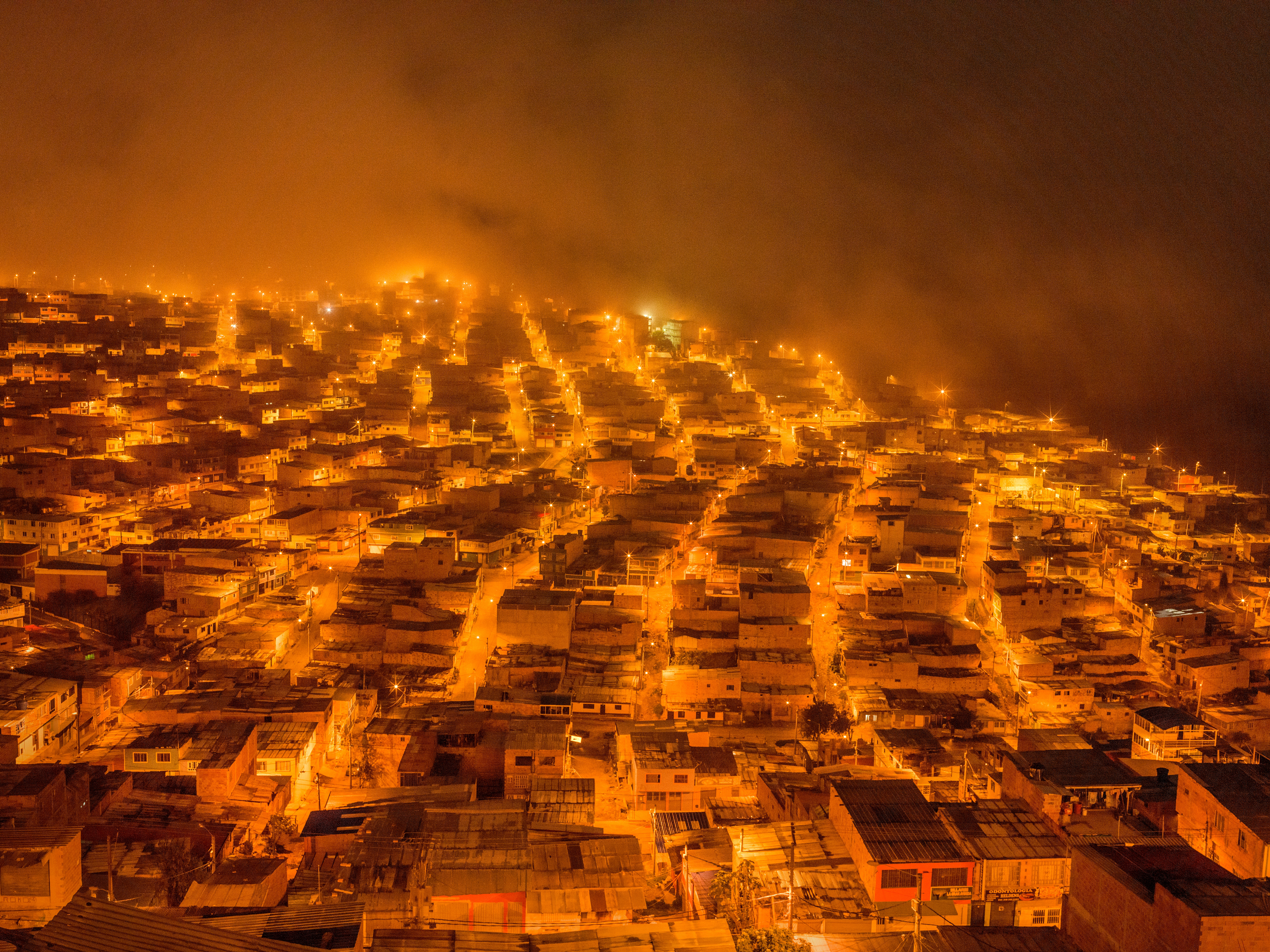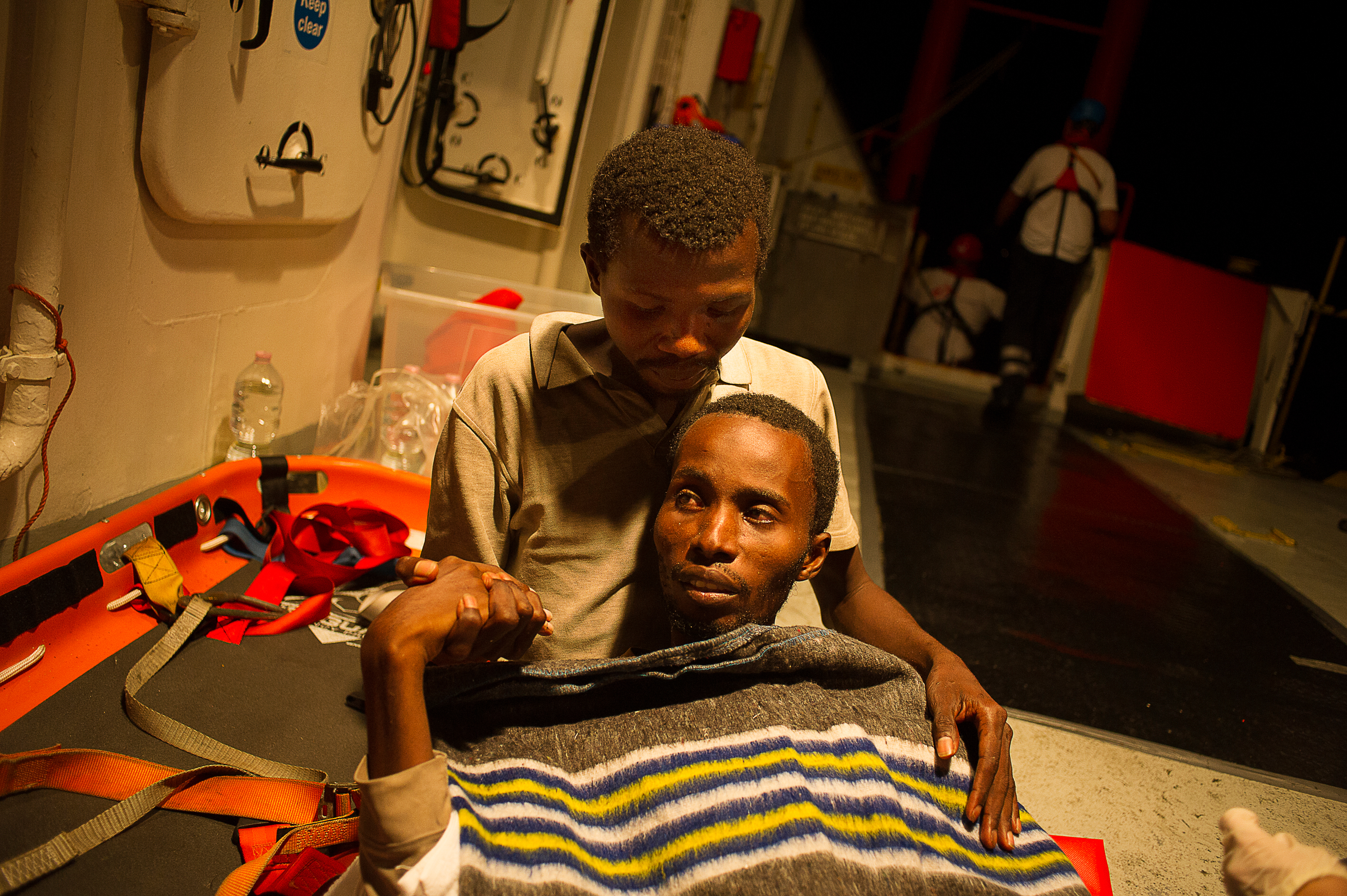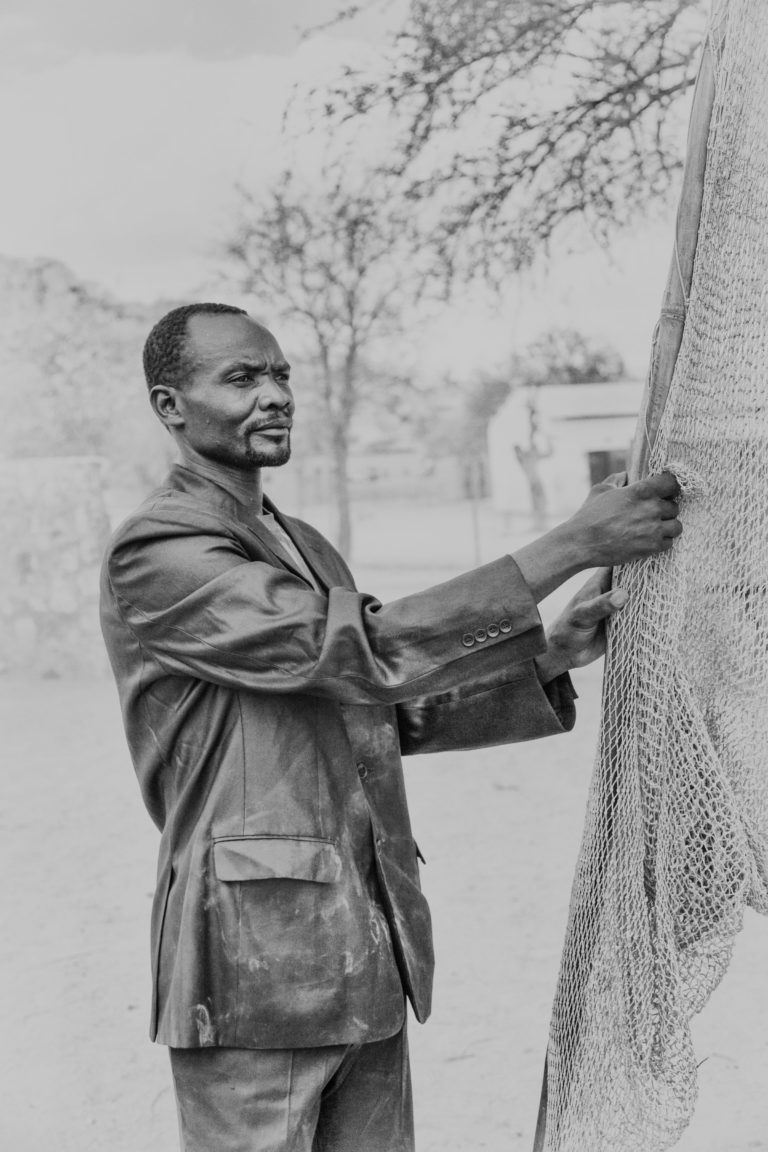
Peter Ksamy Jsiu, a government soldier with his 11 month old son Athian who is suppose to weight up to 11.5 kilos but only weights 5,5. His hair is losing color and his conciseness is weak - both clear signs of severe malnutrition. The country is at war and the father who cares for him by himself, does not have the time or money to get hospitalized here at the Al Sabbah Children’s Hospital in the capital of Juba. Instead he fed Athian with porridge and milk and went back to the barracks where they live.
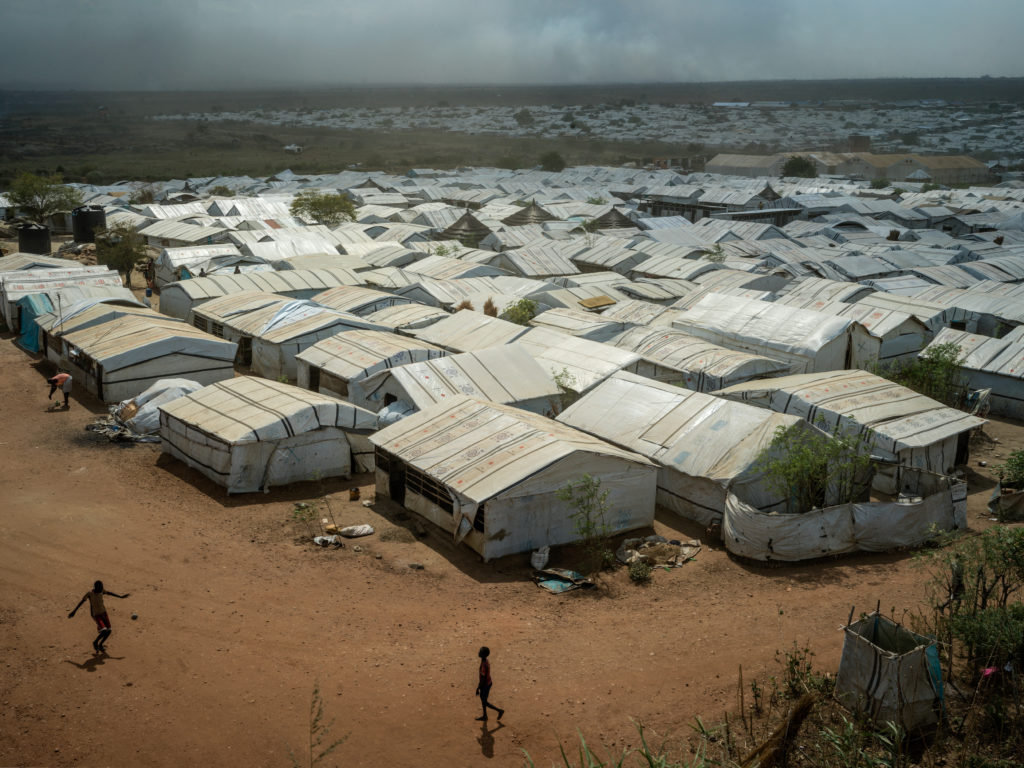
Refugee camp in Juba under the protection of UN-forces. The habitants are mostly from the Nura-tripe and fear violent attacks from members of the Dinka-tripe if they leave the camp. As of 08 December 2017, a total of number of 38,113 civilians are seeking safety in two Protection of Civilians (PoC) sites located on in Juba.
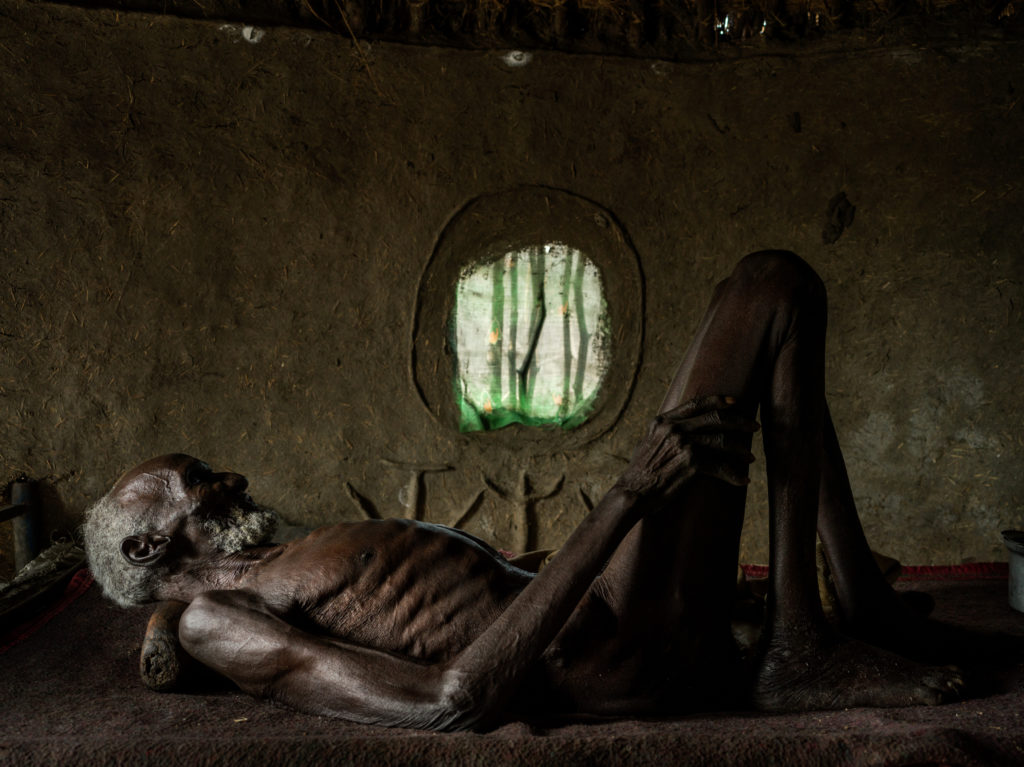
Pout Gew Dor in his bed. So weakened that he doesn’t have the strength to get up and stand in line for the long awaited relief aid from World Food Programme that has finally arrived to the village. Around five million people or more than 40 per cent of the population in South Sudan face an acute need of food. For the first time in years relief aid has now arrived to the remote village of Ngueny.

The story of the youngest nation in the world is in many ways a tragedy. In 2011 South Sudan cut itself loose after many years of civil war with Sudan but after just two years the alliance between Dinka and Nuer tribes broke and a new civil war broke out. Around 300.000 have by estimate been killed during the four years of civil war, and four million are according to the UN displaced by the war. Two million have escaped to the neighboring countries while two million are refugees in their own country. 63 percent of all refugees in the country are below 18 years old. A man is fishing on the Nile.

Since 2014 UNICEF and World Food Programme has used the so-called Rapid Response Missions to try to get relief aid out to the most remote areas of the country. Special teams fly in with helicopters to count and register the inhabitants so that they can get food, vaccinations and some medical treatment. And for the first time in many years the aid arrives here to Ngueny. UN estimates that over a quarter of a million children in South Sudan are seriously malnourished and more than a million children are in risk of becoming so.
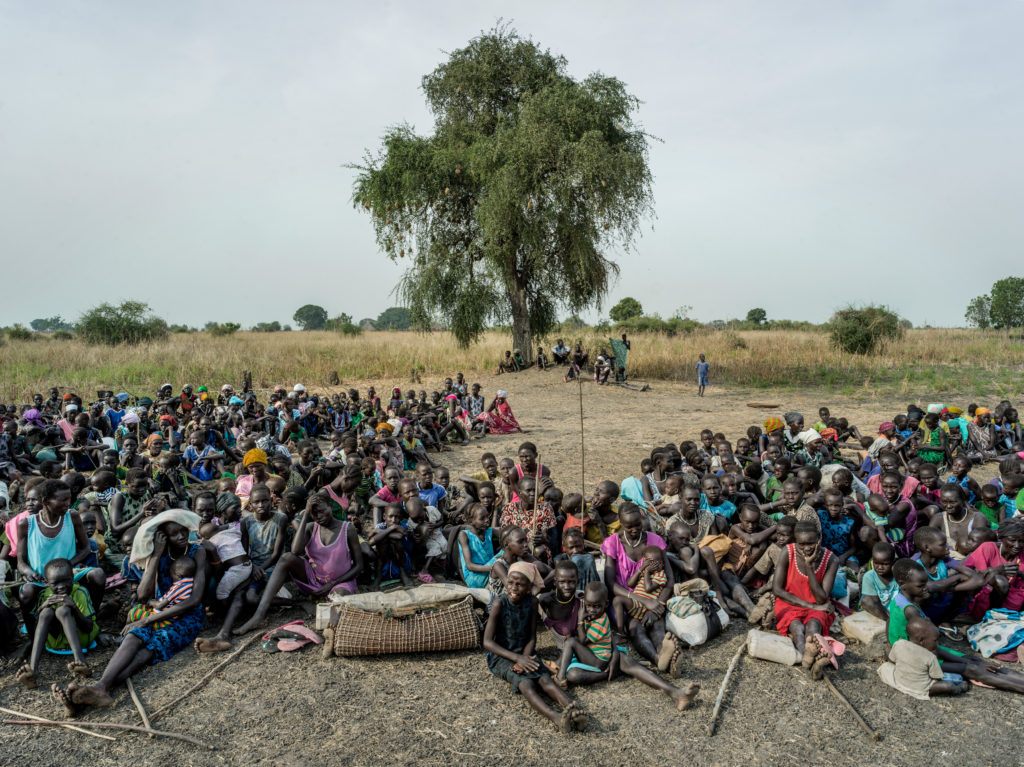
Rumor spreads fast. In just a few days the village is flooded – not by water but by thousands of people from the district that arrives to be counted and registered to get a share of the relief aid. The front line between the government army SPLA og SPLA-IO is 50 kilometers away at the most. But during the rainy season a grownup man will have to walk 4-5 days through the swamp to get there. Said in other words: Living so far apart offers you some protection.
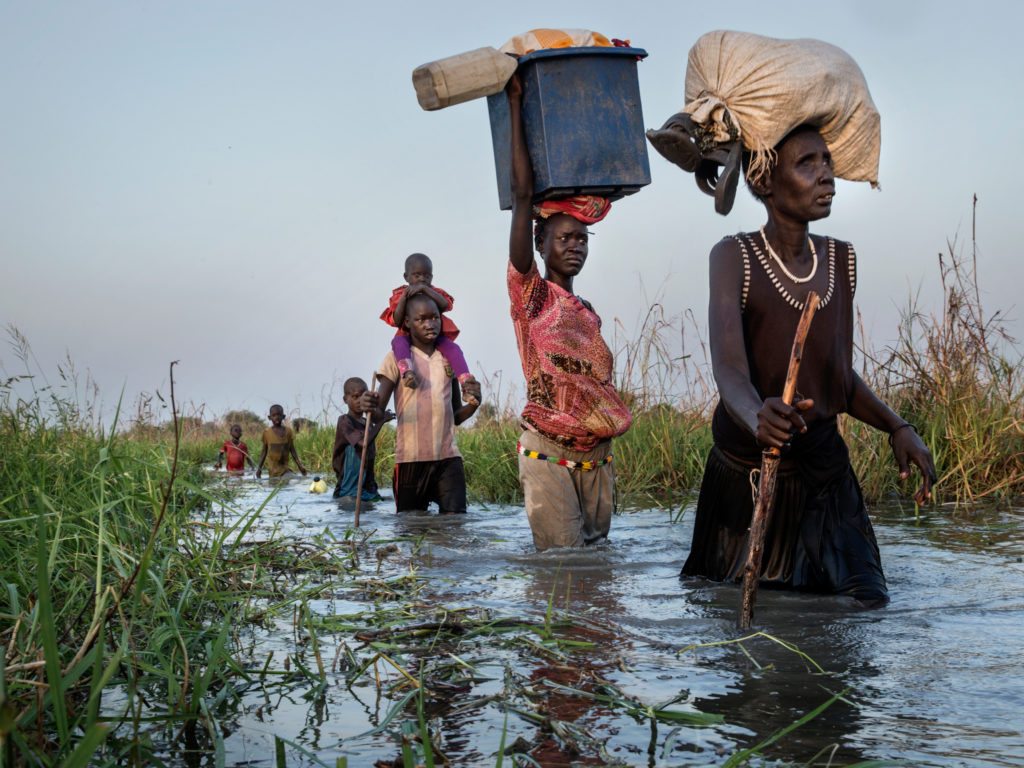
Blankets and pots on the heads, children on the shoulders and babies that are pushed forward in little boats made of reeds. The starved and exhausted families are moving slowly through the swamp water. Some walk for several days to get a share of the medical aid and food supplies. It is difficult to move through the swamp. Feet get stuck into the mud, you can cut yourself on the reed, and there are snakes and parasites in the water. Many also get – like the mother in front – eye infections after having had contact with the dirty water.
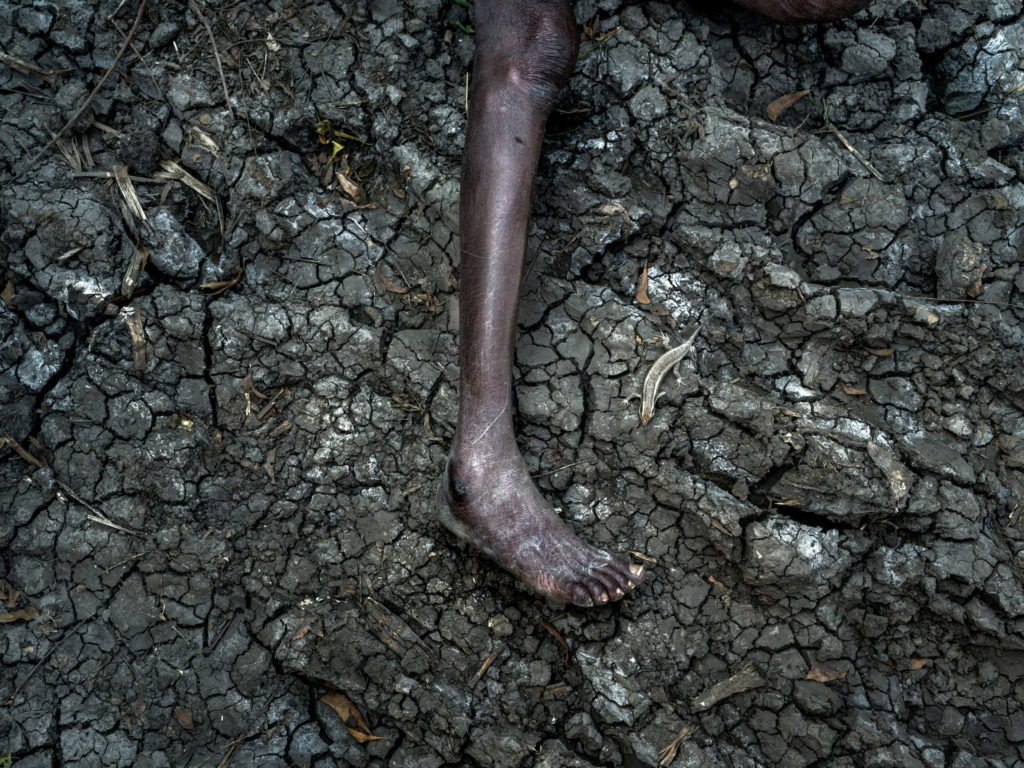
The leg of a woman. The small and remote village of Ngueny located north of Nassir (also spelled Nasir and Nasser) in the Upper Nile State of South Sudan. In the beginning of December a small team from UNICEF and WFP arrived to the village to make health checks, give vaccines and register the population prior to a food-drop that will take place in January 2018. The area is dominated by the Nuer-tribe and under the control of the armed rebel group Sudan People’s Liberation Movement in Opposition (SPLA-IO) who is at civil war with the national army which are loyal to the Dinka-tribe.
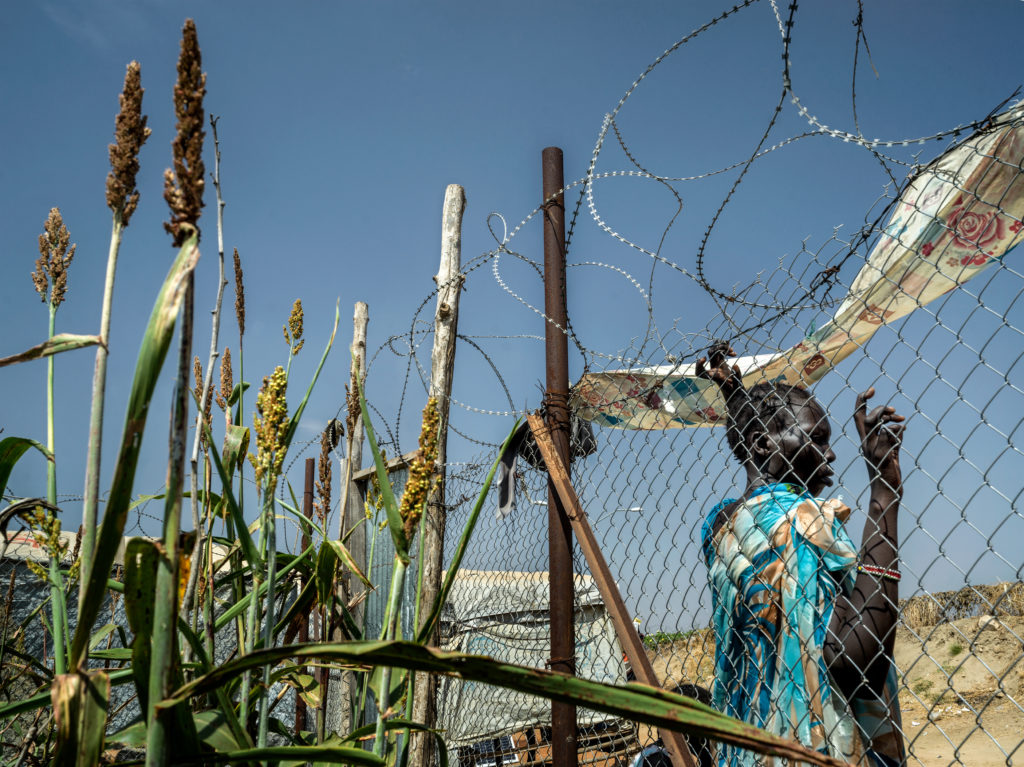
Dry land. Fence and barbwire are protection an area inside the camp where an NGO grown some crops and make food distributions. Refugee camp in Juba under the protection of UN-forces. The habitants are mostly from the Nura-tripe and fear violent attacks from members of the Dinka-tripe if they leave the camp. As of 08 December 2017, a total of number of 38,113 civilians are seeking safety in two Protection of Civilians (PoC) sites located on the UNMISS base in Juba.PoC 1
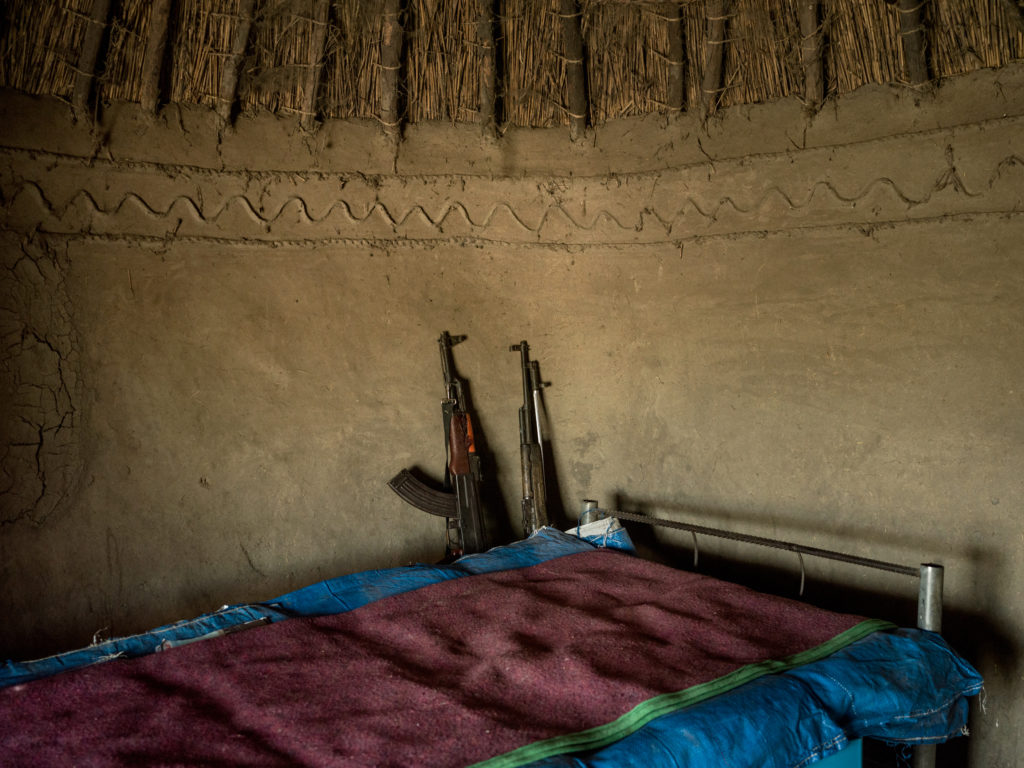
Two rifles by the bedside. People in the district belong to the Nuer tribe and because the government controlled Dinka tribe is committing ethnic cleansing, the people here doesn’t feel they have no other choice than supporting the Nuer rebel army SPLA-IO. The village is in many ways affected by the conflict, either because the young men are participating in armed conflict or because they are internally displaced or just because they have to live in fear in a remote swamp with the enemy so close by.
The story of South Sudan is extremely complex – but in some ways it’s also simple: It’s about surviving. To make it from morning to night, from today till tomorrow. The meaning of life is to keep it and then see what happens. This is what war and hunger does to people, and right now this is the harsh reality in South Sudan. A country only six years old – but already on the verge of killing itself.
South Sudan is currently experiencing the third largest refugee crisis in the world. More than four million people have fled their homes because of the ethnic civil war between the Dinka and Nuer-tribes.
